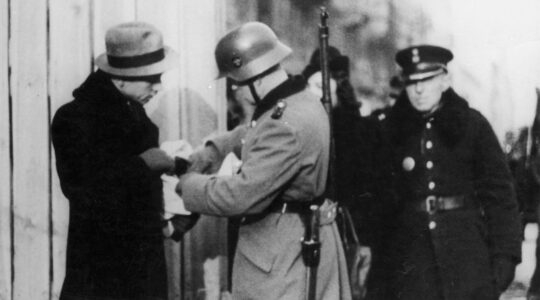The bagel has long been a basic codifier of Askenazic Jewish identity. The hip-hop parody group 2 Live Jews, in their anthem of Jewish identification “Shake Your Tuchus,” said, “If you don’t know what a bagel is, I guess I’ll have to clue ya–it’s doughy, round, and can be found at a deli close by to ya.”
The word bagel means “bracelet” in German. The bagel as we know it developed in South Germany in the 16th century, evolving from a similar-looking but heavier, wider-rimmed roll called a bublik. Bagels spread to Jewish shtetls in Poland, where they took on their definitive form–light, chewy, boiled, and where they were sold by vendors carrying several dozen stacked on a long stick. When Polish Jews came to America, so did the bagel. It became its own cottage industry, and was spread to the rest of the country by Henry Lender (founder of Lender’s Bagels). It even got its own trade union, Bagel Bakers Local 338, which became so powerful that, when a strike broke out in 1951, the New York Times ran stories about a “bagel famine.”
Today, there are more than 16,000 bagelries in the New York area alone. According to the food business survey AIB, over $618 million worth of bagels have been sold in the U.S. in the past year. With statistics like that, it doesn’t look like there’ll be another bagel famine any time soon.
JTA has documented Jewish history in real-time for over a century. Keep our journalism strong by joining us in supporting independent, award-winning reporting.





